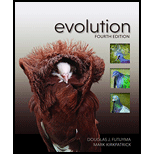
a.
To determine: The primary eight amino acids for each of the given DNA sequences, which are given as follows:
Introduction: The given DNA sequences encode the initial eight amino acids for five alleles of the Adh protein in Drosophila pseudoobscura. Nucleotides that vary from the first sequence are shown by a lowercase letter. The sequences of DNA code for a number of alleles. The alleles are responsible for specific assignation of characters to the individual. There are a number of alleles that can be present within a gene. The genes are present in the chromosomes, and the chromosomes are present in pairs. Alleles are responsible for the genotypic character of the organism, which reflects in the
a.
Explanation of Solution
The given DNA sequences are as follows:
The amino acids from the above DNA sequences using the codon table are given below:
b.
To determine: The five polymorphic sites and signify whether the site is represented by synonymous or non-synonymous polymorphisms in the given DNA sequences.
Introduction: The given DNA sequences encode the initial eight amino acids for five alleles of the Adh protein in Drosophila pseudoobscura. Nucleotides that vary from the first sequence are shown by a lowercase letter. The sequences of DNA code for a number of alleles. The alleles are responsible for specific assignation of characters to the individual. There are a number of alleles that can be present within a gene. The genes are present in the chromosomes, and the chromosomes are present in pairs. Alleles are responsible for the genotypic character of the organism, which reflects in the phenotype of the organism.
b.
Explanation of Solution
The process of polymorphism results in the modification of the
The synonymous or non-synonymous polymorphisms in sequences are as follows:
The production of “alanine” in the second sequence fulfills the criteria of polymorphism.
c.
To determine: The one-difference intermediate in the production of TTG from CTC.
Introduction: The given DNA sequences encode the initial eight amino acids for five alleles of the Adh protein in Drosophila pseudoobscura. Nucleotides that vary from the first sequence are shown by a lowercase letter. The sequences of DNA code for a number of alleles. The alleles are responsible for specific assignation of characters to the individual. There are a number of alleles that can be present within a gene. The genes are present in the chromosomes, and the chromosomes are present in pairs. Alleles are responsible for the genotypic character of the organism, which reflects in the phenotype of the organism.
c.
Explanation of Solution
According to the provided information, the CTC sequence is responsible for the production of TTG sequence. Both the codons code for “Leu.” However, the codon that could be the intermediate of the process could be the same as “leu.” TTC codes for the “Phe” when activated; hence, it cannot be the intermediate in the reaction. Hence, the one-difference intermediate must be CTG, which also codes for the “Leu” that forms the bridge in the production of TTG from the CTC codon.
d.
To determine: The reason that synonymous polymorphisms are likely to be more frequent than non-synonymous polymorphisms.
Introduction: The given DNA sequences encode the initial eight amino acids for five alleles of the Adh protein in Drosophila pseudoobscura. Nucleotides that vary from the first sequence are shown by a lowercase letter. The sequences of DNA code for a number of alleles. The alleles are responsible for specific assignation of characters to the individual. There are a number of alleles that can be present within a gene. The genes are present in the chromosomes, and the chromosomes are present in pairs. Alleles are responsible for the genotypic character of the organism, which reflects in the phenotype of the organism.
d.
Explanation of Solution
There is a repetition of “3-letter codes” along the codon for the coding of specific amino acid. The production of new amino acid takes place when there is a change in the second element, resulting in non-synonymous polymorphism. However, changes in the third element of the codon give the similar amino acid. Thus, synonymous polymorphisms are likely to be more frequent than non-synonymous polymorphisms.
Want to see more full solutions like this?
Chapter 4 Solutions
Evolution, Fourth Edition (looseleaf)
- 22. Which of the following mutant proteins is expected to have a dominant negative effect when over- expressed in normal cells? a. mutant PI3-kinase that lacks the SH2 domain but retains the kinase function b. mutant Grb2 protein that cannot bind to RTK c. mutant RTK that lacks the extracellular domain d. mutant PDK that has the PH domain but lost the kinase function e. all of the abovearrow_forwardWhat is the label ?arrow_forwardCan you described the image? Can you explain the question as well their answer and how to get to an answer to an problem like this?arrow_forward
- Describe the principle of homeostasis.arrow_forwardExplain how the hormones of the glands listed below travel around the body to target organs and tissues : Pituitary gland Hypothalamus Thyroid Parathyroid Adrenal Pineal Pancreas(islets of langerhans) Gonads (testes and ovaries) Placentaarrow_forwardWhat are the functions of the hormones produced in the glands listed below: Pituitary gland Hypothalamus Thyroid Parathyroid Adrenal Pineal Pancreas(islets of langerhans) Gonads (testes and ovaries) Placentaarrow_forward
 Biology Today and Tomorrow without Physiology (Mi...BiologyISBN:9781305117396Author:Cecie Starr, Christine Evers, Lisa StarrPublisher:Cengage Learning
Biology Today and Tomorrow without Physiology (Mi...BiologyISBN:9781305117396Author:Cecie Starr, Christine Evers, Lisa StarrPublisher:Cengage Learning Human Heredity: Principles and Issues (MindTap Co...BiologyISBN:9781305251052Author:Michael CummingsPublisher:Cengage Learning
Human Heredity: Principles and Issues (MindTap Co...BiologyISBN:9781305251052Author:Michael CummingsPublisher:Cengage Learning- Essentials Health Info Management Principles/Prac...Health & NutritionISBN:9780357191651Author:BowiePublisher:Cengage





